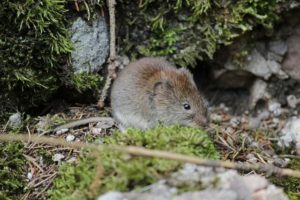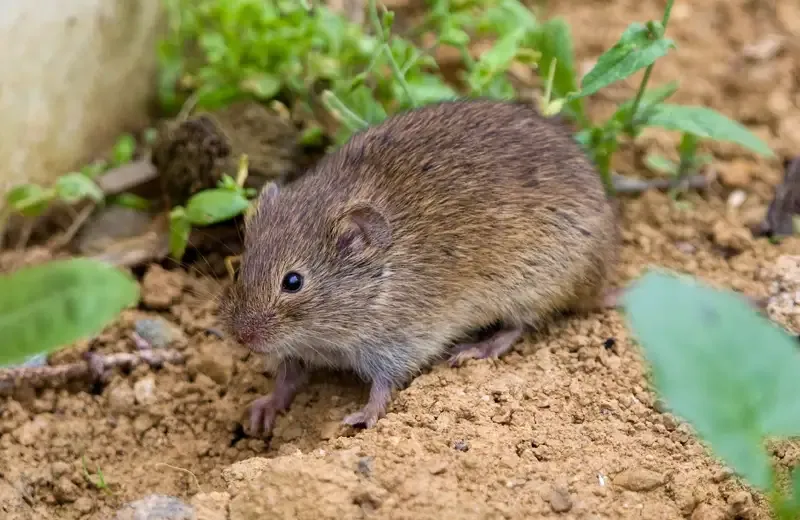Vole Control Tips to Preserve Your Backyard and Gardens
Vole Control Tips to Preserve Your Backyard and Gardens
Blog Article
Understanding Vole Parasite Control: In-depth Insights on Problem Prevention and Treatment Methods
As property owners and caretakers, the presence of voles can position a considerable difficulty to preserving the integrity of our outdoor spaces. Understanding the intricacies of vole behavior is crucial in developing reliable parasite control approaches. By identifying the refined indications of vole infestation at an early stage, we can take proactive measures to avoid prevalent damages. In this discussion, we will discover the subtleties of vole habits, explore the recognition of invasion indicators, and reveal one of the most efficient avoidance and therapy techniques. Stay tuned to uncover the insights that will encourage you to grasp vole pest control and guard your building against these elusive rats.
Understanding Vole Actions
Analyzing the foraging patterns of voles offers useful insights into their actions and habitat choices. Voles, small rats resembling computer mice, are herbivores known for their underground tunneling tasks. By observing their foraging habits, scientists can acquire a far better understanding of where voles like to develop their environments and the degree of their ecological impact. Voles are prolific dog breeders, with a solitary female efficient in generating several trashes in a year, making it crucial to comprehend their actions for reliable insect control methods.
Research study shows that voles exhibit careful feeding routines, favoring tubers, roots, and seeds. This nutritional preference affects their foraging patterns, leading them to areas abundant in vegetation and ground cover. Additionally, voles are known to create fancy tunnel systems for foraging and nesting purposes, indicating a high level of adaptability to their surroundings.
Understanding vole behavior is essential for applying targeted parasite control procedures that disrupt their habitat choices and foraging activities (vole lawn damage). By studying their habits, experts can create extra efficient prevention and therapy techniques to manage vole problems

Identifying Indicators of Vole Invasion
Vole invasions can be spotted by identifying certain indicators of their visibility in an area. One of one of the most common indicators of a vole invasion is the visibility of surface paths. Voles produce networks of narrow pathways on the ground that are generally around two inches vast. These runways are often discovered in grassy locations or beneath compost or ground cover where voles can relocate easily and look for food.
One more key sign of vole problem is the existence of tiny burrow openings in the ground. Voles dig shallow burrow systems with several entrances and leaves. These burrows function as sanctuary and nesting sites for the voles. In addition, voles are understood to leave behind eaten plant stems, roots, and light bulbs near their burrow openings, suggesting their feeding activity in the area.
In addition, vole droppings can also symbolize their presence. Vole droppings are little, brownish, and cylindrical fit, resembling grains of rice. Discovering these droppings along paths or near burrow openings can confirm a vole invasion. By being cautious for these indications, homeowner can immediately attend to vole problems and protect against further damage.
Applying Aggressive Avoidance Procedures

In addition, employing all-natural vole deterrents like castor oil-based repellents or killer urine can work as effective safety nets. It is likewise suggested to frequently evaluate outside areas for any kind of indications of vole task, such as paths or burrow openings, to attend to possible infestations immediately. vole pest control. By embracing these aggressive prevention techniques, homeowner can considerably minimize the chance of vole damage and maintain the health and wellness and appearances of their landscapes
Effective Treatment Methods
Including targeted capturing approaches and making use of approved rodenticides are important components of efficient therapy approaches for taking care of vole problems. Capturing can be a reliable means to reduce vole populaces, specifically when positioned purposefully in their energetic paths. Break catches and live catches can both be reliable, with the last permitting for the capture and moving of voles. When making use of rodenticides, it is crucial to follow safety standards to stop injury to non-target pets and family view publisher site pets. Location rodenticides in safe bait stations to minimize threats to unplanned targets. In addition, environment adjustment, such as decreasing ground cover and eliminating sources of food, can aid hinder voles from infesting a location. Routine monitoring and upkeep are additionally crucial elements of successful therapy methods to make sure that vole populations are maintained under control. By incorporating capturing, rodenticides, habitat alteration, and constant tracking, effective vole parasite control can be accomplished.
Tracking and Upkeep Tips
Preserving an organized schedule for tracking and conducting routine upkeep activities is vital to sustain the efficiency of vole parasite control steps. Normal tracking enables the very early detection of vole activity, making it possible for prompt treatment prior to infestations intensify. To properly monitor vole populations, purposefully positioned traps can be used in vole paths or near burrow entries. By routinely inspecting these catches, homeowner can determine the degree of vole task and readjust control strategies appropriately.
Furthermore, preserving a neat and well-kept landscape is necessary in vole avoidance. Cleaning away debris, such as stacks of wood or dense vegetation, eliminates potential vole environments. Routinely cutting and trimming grass plants helps in reducing vole hiding spots and minimizes their accessibility to food resources.
Additionally, ongoing maintenance of physical obstacles, such as fencings or cable mesh, is vital to prevent vole breach. Evaluating and fixing any type of damages to these frameworks makes sure that vole control stays effective in guarding residential or commercial properties from infestations. By including these tracking and maintenance techniques into a comprehensive vole parasite control plan, individuals can properly handle vole populaces and secure their homes from damage.
Final Thought
Finally, understanding vole bug control requires a strong understanding of vole habits, the capacity to determine indicators of invasion, implementing positive avoidance procedures, effective treatment approaches, and constant surveillance and maintenance. By taking a thorough method to vole control, people can efficiently take care of and stop problems, eventually protecting their building and surrounding setting from damages triggered by these tiny rats.
In this discussion, we will certainly discover the nuances of vole actions, delve right into the recognition of infestation indications, and uncover the most effective avoidance and treatment techniques.Integrating targeted capturing methods and using accepted rodenticides are important parts of reliable treatment techniques for handling vole problems. To effectively keep an eye on vole populaces, purposefully placed catches can be made use of in vole web runways or near burrow entryways. Checking resource and repairing any type of problems to these structures guarantees that vole control continues to be reliable in safeguarding residential properties from infestations. By integrating these surveillance and upkeep techniques into a detailed vole bug control strategy, people can efficiently handle vole populaces and shield their properties from damage.
Report this page